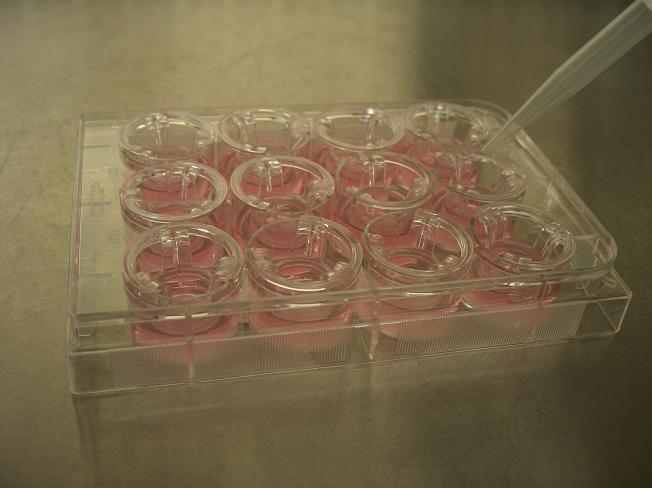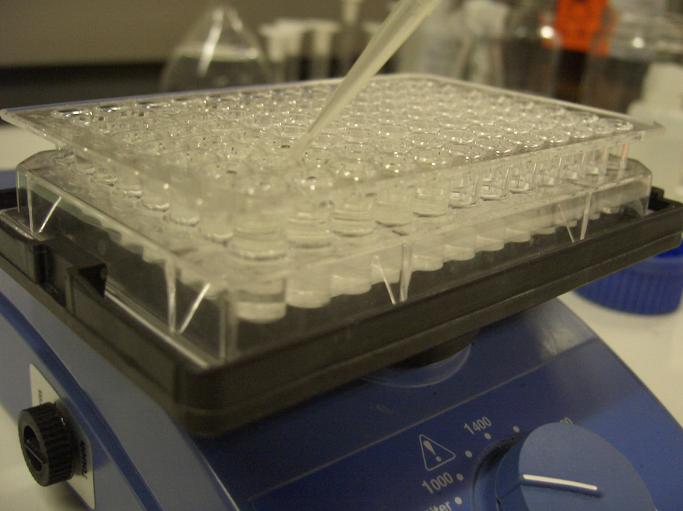In vitro models for prediction of drug absorption and metabolism
In vitro models are becoming more popular for prediction of drug metabolism and bioavailability. These models are more prone to automation and high throughput screening, but also allow reduction of the use of animals in preliminary tests where usually most compounds are discarded. Being less complex systems they are easier to interpret and correlate with in vivo observations.
Among the in vitro systems used for the study of drug intestinal absorption there are two models which are the most used: Caco-2 and PAMPA (parallel artificial membrane permeability assay). In the Caco-2 model, permeability is tested across a differentiated monolayer of cells of the human colon adenocarcinoma, while in the PAMPA method an artificial phospholipidic membrane is used with the same purpose.
Caco-2 model
|  |  |
| PAMPA model |  |  |
In our laboratory the Caco-2 and the PAMPA models are routinely used and have been applied on the evaluation of the permeability of flavonoids, prodrugs designed for colon delivery and some natural products, such as wine extracts or dietary supplements.
Although the Caco-2 model provides significant information in terms of active transport and efflux prediction, it lacks modulation of pre-absorption metabolism and therefore in our laboratory are being made some adjustments:
- A mixed metabolism-permeability model is under development, associating enteric bacteria to the traditional Caco-2 model.
- Differentiated Caco-2 cell monolayers express most drug-metabolizing enzymes and transporters but fail to express some relevant enzymes at the same relative level that they can be encountered in the intestine. Our laboratory is currently developing, in collaboration with the Animal Cell Technology group, an improved Caco-2 model that can express those enzymes.
Hepatic models, such as the Hep-G2 cells, are also being used in our laboratory for predicting drug metabolism and citotoxicity in the liver.




